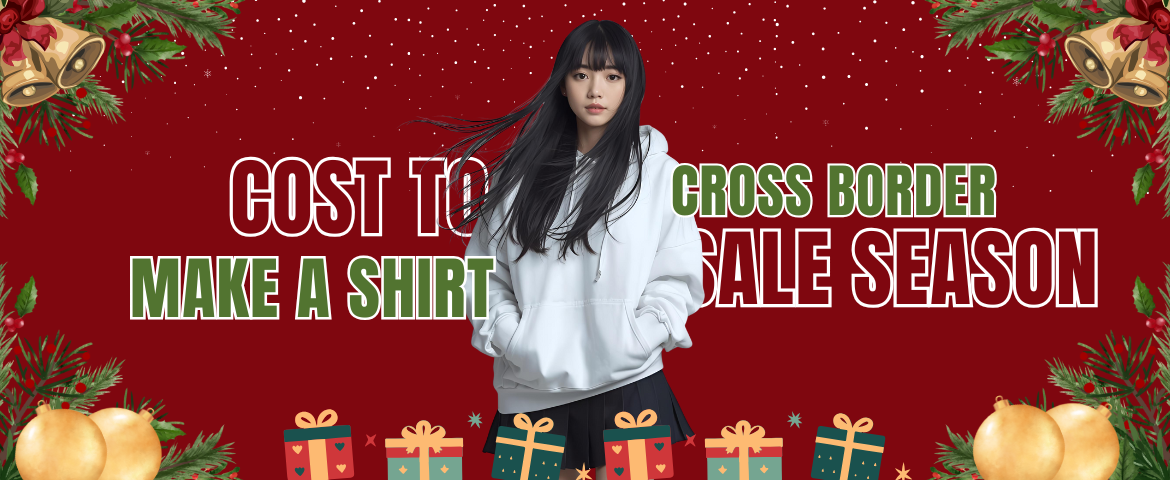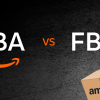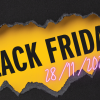How Much Does It Really Cost to Sell a Shirt for Cross-Border E-Commerce?

Selling shirts online through cross-border platforms like Etsy, Amazon, Shopify, or TikTok Shop Global has become a hot trend in recent years. Especially during the year-end sale season Christmas and New Year, global shopping demand spikes, creating huge opportunities for sellers to boost revenue.
But before you jump in, it’s important to understand the actual cost of one shirt from production to the moment it reaches your customer’s doorstep.
1. Costs When Making a Shirt
Base Materials
The first cost factor comes from the fabric itself.
- 100% combed ring-spun cotton gives a soft, premium feel and is well-suited for US and EU markets.
- The base cost usually ranges from USD 6–18 per piece, depending on fabric weight (oz) and supplier.
- Blended fabric (cotton/polyester) may be cheaper but feels different and may not handle detailed prints as well.
Printing Methods
Your printing method affects both the quality and overall cost.
- DTG (Direct-to-Garment): flexible for small runs, average cost USD 4–7 per shirt.
- Screen printing: best for bulk orders, lower cost per shirt (USD 2–4), but requires setup fees.
- Sublimation / DTF: delivers full-colour, all-over prints but comes at a higher price due to ink and transfer paper costs.
Design Costs
If you design by yourself, the cost is almost zero. But if you engage a professional designer:
- Custom designs can range from USD 5–50 per artwork, depending on complexity and style.
💡 Pro tip: invest in festive designs related to Christmas, New Year, or emotional themes like family, love, and pets these are the top-selling niches during the holiday season.
Packaging
Good packaging adds value to your product and improves the unboxing experience.
- Simple packaging like a clear zip bag with a brand sticker: USD 0.30–0.50 per shirt.
- Premium options (logo tags, custom boxes): USD 1–1.50 per shirt, but they help build brand image.
2. Other Costs to Watch Out For
Shipping
Shipping is often the biggest challenge for cross-border sellers.
- International air shipping or fulfillment services (like FlashPOD, Printify, or Gelato) usually cost USD 5–24 per shirt, depending on destination (US, EU, UK, etc.).
- During the year-end peak, rates may increase by 10–20%, so plan early to avoid cost spikes.
Platform Fees
Most e-commerce platforms charge standard transaction fees:
- Etsy: 6.5% + USD 0.20 per listing
- Amazon: around 15% of the selling price
- Shopify: monthly store fees + 2–3% payment transaction fee
Make sure to include these fixed costs when setting your retail price.
Marketing
Marketing and ads can take up 20–40% of your total budget.
- Best-performing channels during the festive season: TikTok Ads, Meta Ads, and Etsy Ads.
- Emotional content works best for example, promoting your shirts as gifts for family or friends.
🎯 Try running campaigns like “Christmas Gift Ideas” or “New Year Limited Design” to catch peak demand.
Returns
The average return rate for apparel is 5–10%.
If you handle inventory yourself, keep a buffer for return costs.
For print-on-demand models, returns may cost less, but do make sure your return policy is clear to avoid loss.
3. How to Sell Effectively During the Upcoming Sale Season?
To make the most out of the Christmas–New Year sales period, you’ll need more than just cost control you need a smart, well-timed strategy. Here are some practical tips to help you sell better:
1. Start Early Launch Products 4–6 Weeks Before the Sale
Cross-border platforms take time to review, display, and rank your listings.
Launching early helps you build organic traffic and test which designs work best.
👉 Pro tip: upload Christmas-themed shirts in early November, and New Year collections by mid-December.
2. Focus on Emotional and Giftable Designs
During the festive season, most buyers are shopping for gifts.
Designs like “Matching Family Tee”, “Best Gift for Dad”, or “Merry Vibes Only” often convert 2x better than generic ones.
👉 Keep your designs simple, relatable, and full of festive spirit.
3. Optimise Shipping and Fulfillment
If you’re selling globally, partner with a reliable fulfillment provider to lower logistics costs and reduce returns.
Platforms like FlashPOD, Printify, or Gelato handle printing, packing, and delivery automatically, so you can focus on design and marketing.
4. Advertise at the Right Time
The golden period for ads is Black Friday (late November) and Cyber Monday (early December).
- On TikTok Ads, go for short, lifestyle-style videos.
- On Meta Ads (Facebook/Instagram), use product groups like “Gift ideas for…” to target specific audiences.
- Don’t forget remarketing for users who viewed but didn’t buy they often return to purchase in the final week of December.
5. Improve Customer Experience and After-Sales
Provide clear return policies, a user-friendly shop interface, and responsive customer service.
During the festive rush, customers care more about speed and reliability than just low prices.
💡 In Summary:
Winning the year-end sale season isn’t about cutting costs it’s about smart planning, the right products, and smooth operations.
If you prepare early and strike at the right time, each shirt can bring you 2–3 times more profit compared to the off-season.








